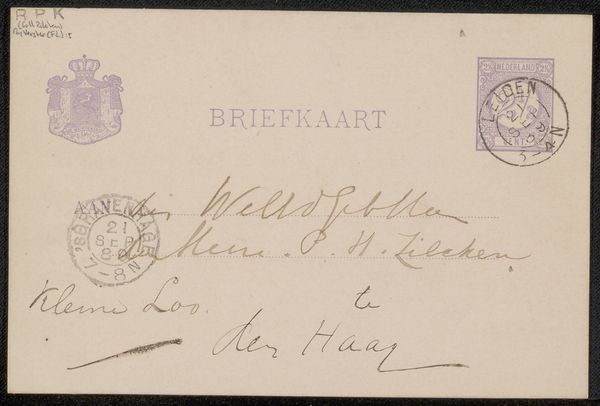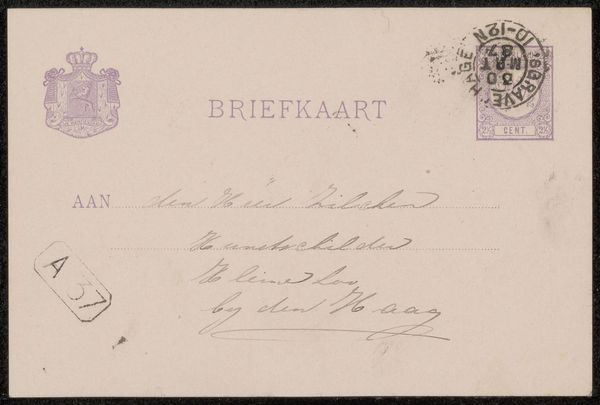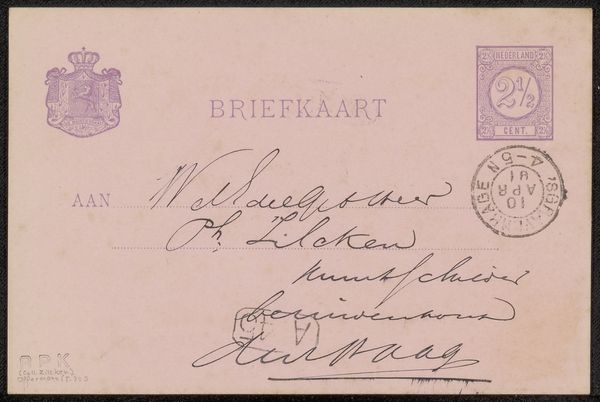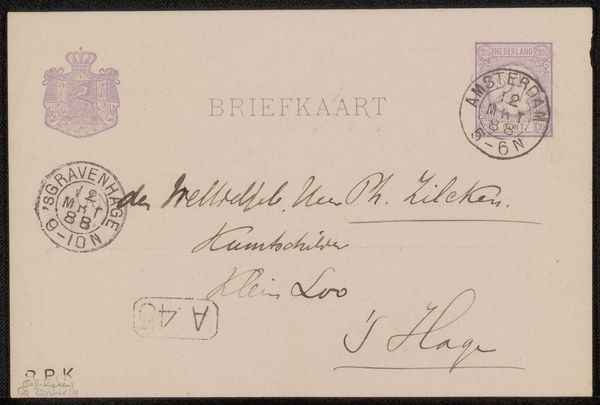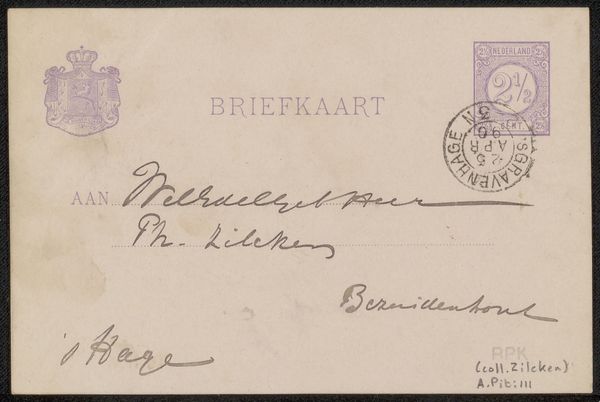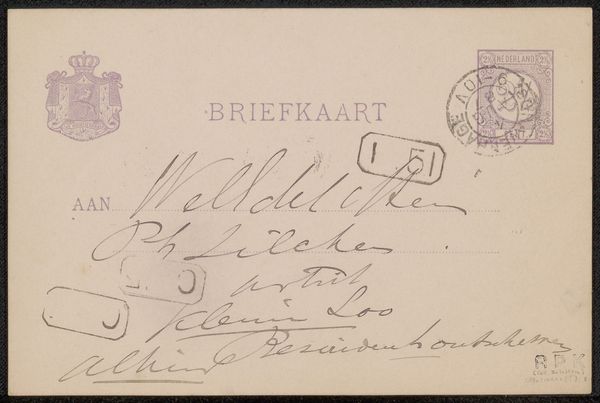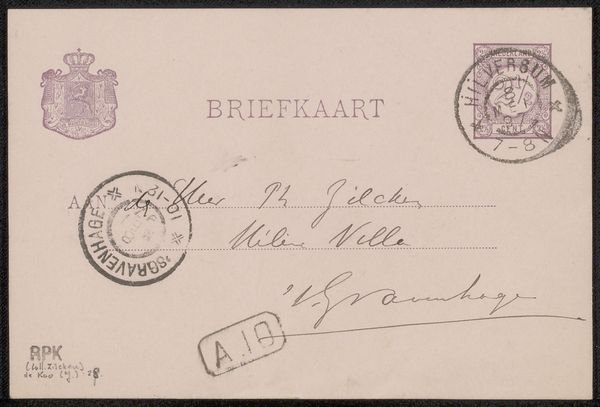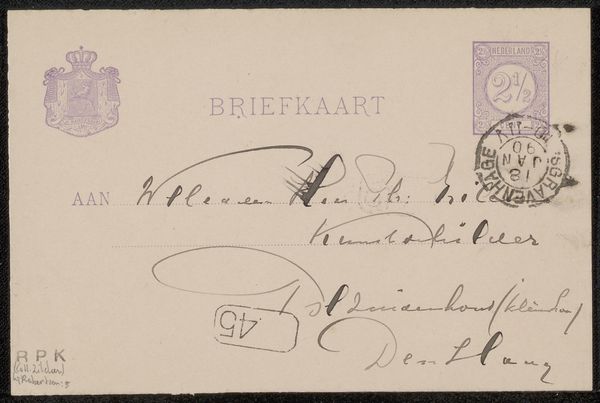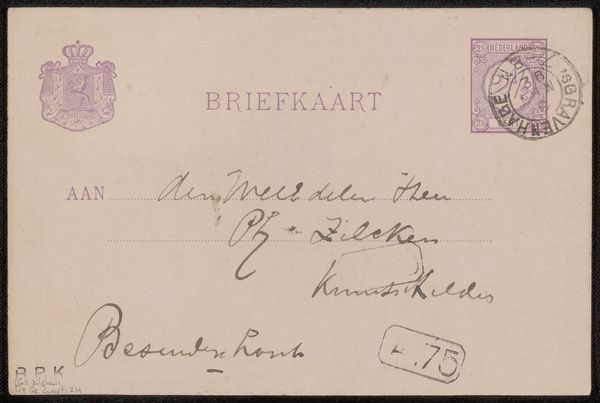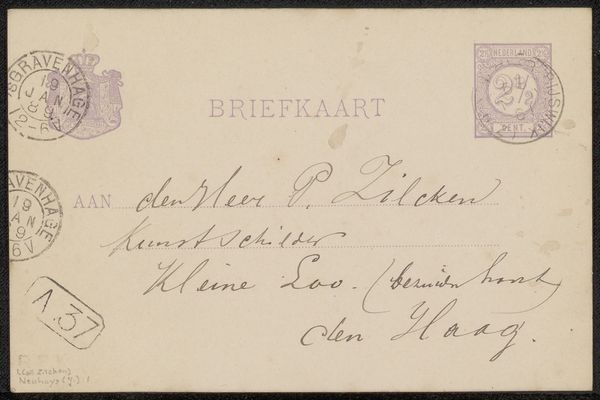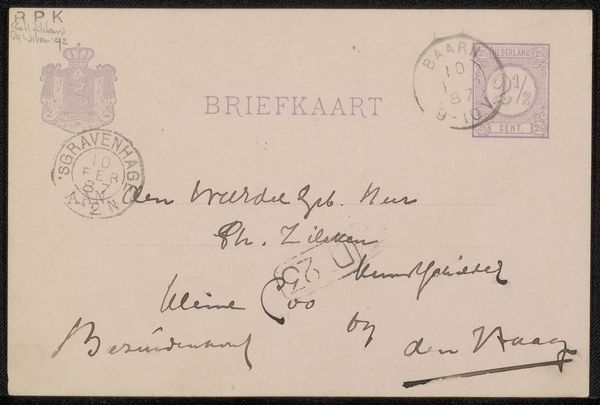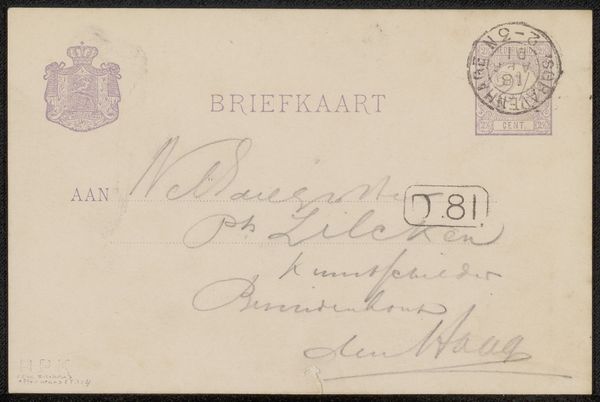
drawing, paper, ink, pen
#
portrait
#
drawing
#
script typography
#
hand-lettering
#
hand drawn type
#
hand lettering
#
paper
#
personal sketchbook
#
ink
#
hand-drawn typeface
#
pen-ink sketch
#
pen work
#
sketchbook drawing
#
pen
#
post-impressionism
#
sketchbook art
Copyright: Rijks Museum: Open Domain
Curator: Before us we have “Briefkaart aan Philip Zilcken”, a postcard addressed to the artist Philip Zilcken from Marinus van der Maarel, believed to have been created before 1891, with the postal markings intact, created in ink on paper. Editor: There's a delicate quality to this. It is almost fragile. You can sense the hand of the artist moving across the page in each curve of the handwriting. Curator: Indeed, the handwriting style becomes an important artifact to examine the artistic practice of that time and of Marinus' mindset. Calligraphy served purposes far beyond mere messaging; it embodies the sensibilities, personal brand, social status, and level of access of its maker in that moment in history. We see it, like script typography, to project that message. Editor: I find the physicality of the postal system fascinating too. Think about the production of the paper itself, the harvesting of resources, and the very specific and very deliberate labour needed for postal delivery, which would impact society at that time. All of those movements and procedures connect the sender and receiver in a real tangible way. Curator: Certainly. Even something seemingly minor such as the coat-of-arms symbol becomes quite a profound statement. What was its role in establishing status? How might Philip Zilcken have interpreted its presence given his own social standing as an artist? These embedded cues shape power dynamics. Editor: The very economy of its creation interests me. The material used to create this artwork reflects the accessibility that these materials provide. How were pen and ink manufactured, and how readily available were they to Marinus at that time? Curator: Considering Zilcken’s position within the art world allows us to appreciate how he might have received correspondence of this nature. There may be clues about interpersonal dynamics. We might discover so much about his life in late 19th century Europe, not just regarding him as an artist, but a figure enmeshed in various circles and societal currents. Editor: The history embedded in this single material item is dense with social meaning and the means for communicating and disseminating at that time. Curator: Reflecting on its intersectional themes offers critical lenses into overlooked details. Editor: Seeing those processes can often speak volumes about what it meant to work and live at this time.
Comments
No comments
Be the first to comment and join the conversation on the ultimate creative platform.
